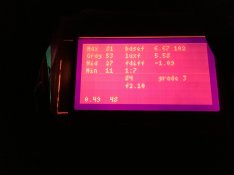Thank you, it's actually your help that is making this happen. Again big thanks for helping out.
I haven't really seen need for densitometer - yet

Also I have believed it needs some kind of optics to get more accurate spot readings? Or how the densitometer works / is used? I understand it can be used to measure how much film passes light through. If I place the lux sensor over the film it shows a some average from some small area of the film, I believe? Do I need densitometer?

Yes I2C can be extended with pull-up resistors but that can be a fiddle and it's easier if you measure the lines with oscilloscope. Of course one can just try different resistors and see what makes it work - but if you have no experience on electronics this I wouldn't go for this

This more of a notice that one might get into troubles when extending I2C wires.


 That's so valuable information! Is it just a coincidence that my print time is approximately 3.5 in f-stops?
That's so valuable information! Is it just a coincidence that my print time is approximately 3.5 in f-stops?  Also I have believed it needs some kind of optics to get more accurate spot readings? Or how the densitometer works / is used? I understand it can be used to measure how much film passes light through. If I place the lux sensor over the film it shows a some average from some small area of the film, I believe? Do I need densitometer?
Also I have believed it needs some kind of optics to get more accurate spot readings? Or how the densitometer works / is used? I understand it can be used to measure how much film passes light through. If I place the lux sensor over the film it shows a some average from some small area of the film, I believe? Do I need densitometer?  you don't need a lux meter after all!
you don't need a lux meter after all! 
